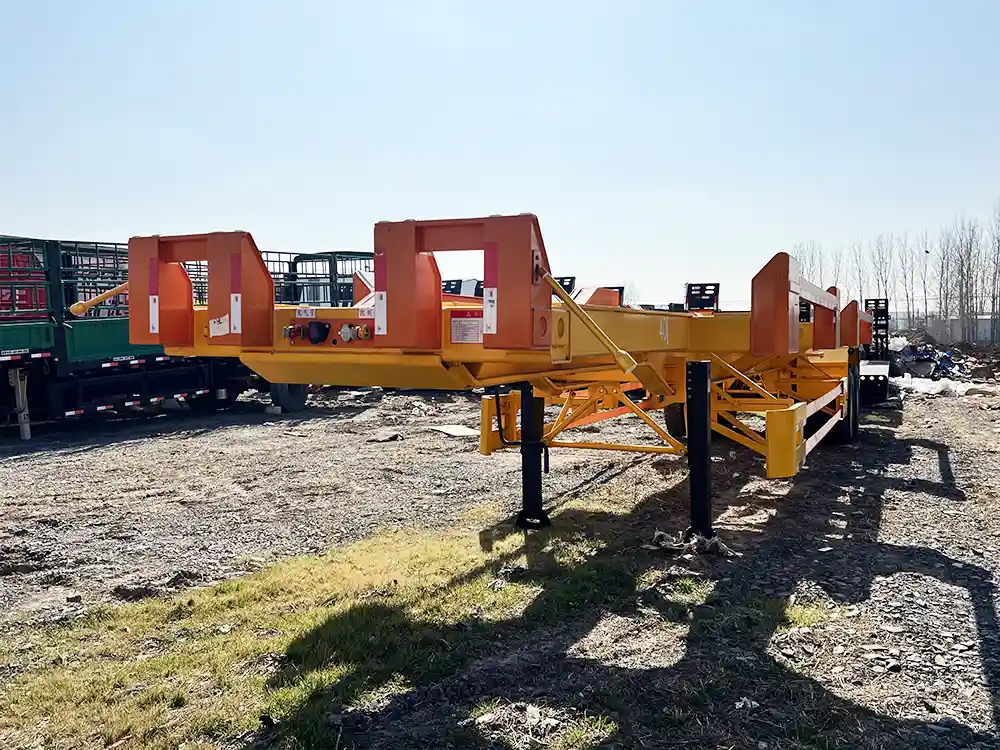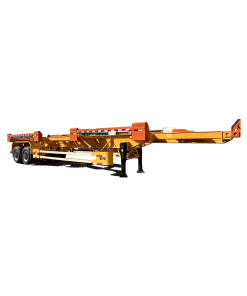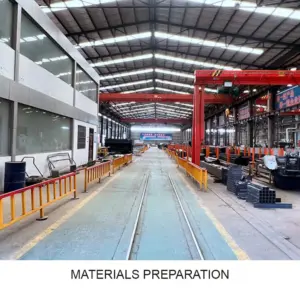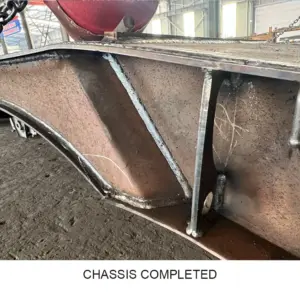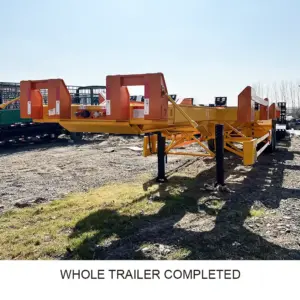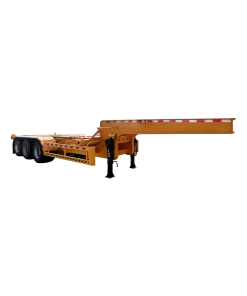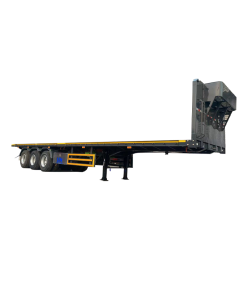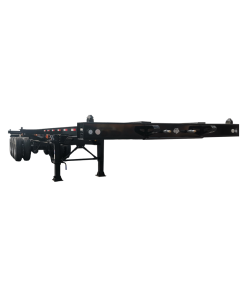Manual download

Terminal Trailer Compressed
Terminal Trailer is a type of trailer designed for the transport of cargo in ports and terminals. It can transport heavy containers or cargo. To carry out operations in complex terminal environments, this trailer has strong carrying capacity and flexibility. It also can accommodate standard size containers, such as 20-foot or 40-foot containers.
The design terminal trailers are to adapt to the transportation in ports and dock. For that reason, the size of Terminal Trailers completely fits the standard container. Therefore, the trailer can perfectly place the container without additional adjustments. As a result, this can save much manpower resources. In addition, a locking system usually equips terminal trailers. Given these points, the trailer can quickly and safely fix or unload containers, greatly speeding up the loading and unloading process.
| Specification | |
|---|---|
| Dimension | |
| Overall Length: | 14,248mm |
| Overall Width: | 2,663mm |
| Overall Height: | 1,650mm |
| King Pin Setting: | 1,420mm |
| Axles Space: | 1,310mm |
| Structural weight ratting | |
| Tare Weight: | 9, 670 KG |
| Payload: | 60,000 KG |
| G.V.W.R.: | 69,670 KG |

Circuit and Pneumatic Systems
The circuit system on the trailer is typically powered by the trailer’s battery, which is usually charged through the electrical system of the towing vehicle or a dedicated power source. The pneumatic system on the trailer typically uses compressed air as its energy source, which requires a source of air, often provided by the air pressure system on the towing vehicle.


LED Lights
The entire trailer uses LED lights as the lighting system, including headlights, taillights, turn signals, and marker lights. LED lights provide bright and efficient illumination, contributing to increased visibility and safety during nighttime driving.
Triangular Structure
The triangular structure in terminal trailers enhances stability and maneuverability in confined port environments, providing increased strength for carrying heavy loads. This design’s adaptability makes it well-suited for diverse cargo types and shapes.


Protective Bars
The protective bars on a trailer help improve road safety by reducing the risk of accidents. It decreases the chances of collisions and injuries resulting from small vehicles accidentally entering the underside of the trailer, thus protecting the safety of other road users.
These trailers play a crucial role in the following areas:
1.Ports and Docks: Terminal trailers are used to transport containers and cargo between ports and docks, facilitating efficient loading, unloading, and transportation at these critical nodes.
2.Logistics Centers: In logistics centers, terminal trailers are utilized for the transportation, sorting, and storage of goods, contributing to expedited logistics processes and overall efficiency improvement.
3.Freight and Transportation: These trailers are employed for long-distance freight transportation, moving goods from production sites or warehouses to distribution centers or final destinations.
The design terminal trailers are to adapt to the transportation in ports and dock. For that reason, the size of Terminal Trailers completely fits the standard container. Therefore, the trailer can perfectly place the container without additional adjustments. As a result, this can save much manpower resources.
FAQ of Terminal Trailer
Different Terminal Trailer models have different carrying capacities, usually between tens of tons to hundreds of tons. Specific carrying capacity depends on your transportation needs and corresponding configuration.
We have trailers in a variety of sizes and lengths to meet the needs of different containers. What type of container do you want to ship?
Yes, we provide operation and maintenance training to ensure your team can use the trailer safely and efficiently.







